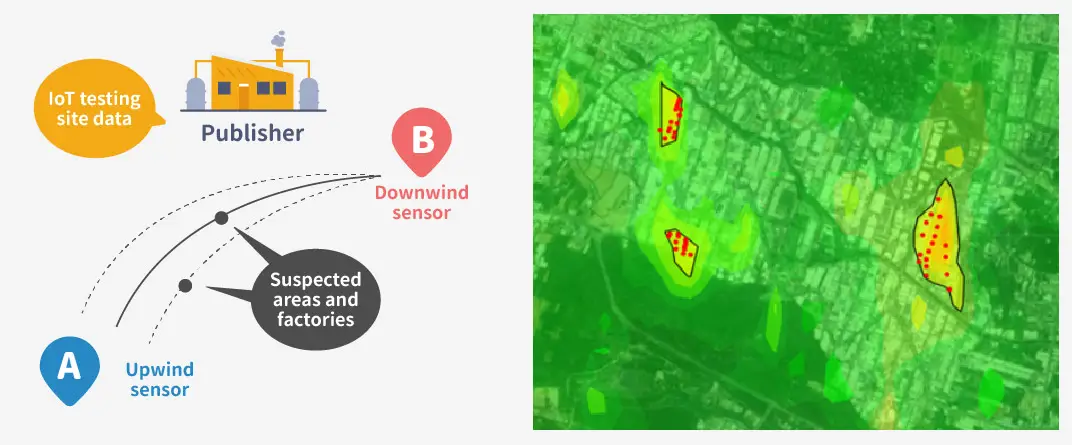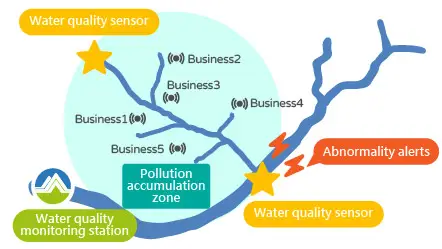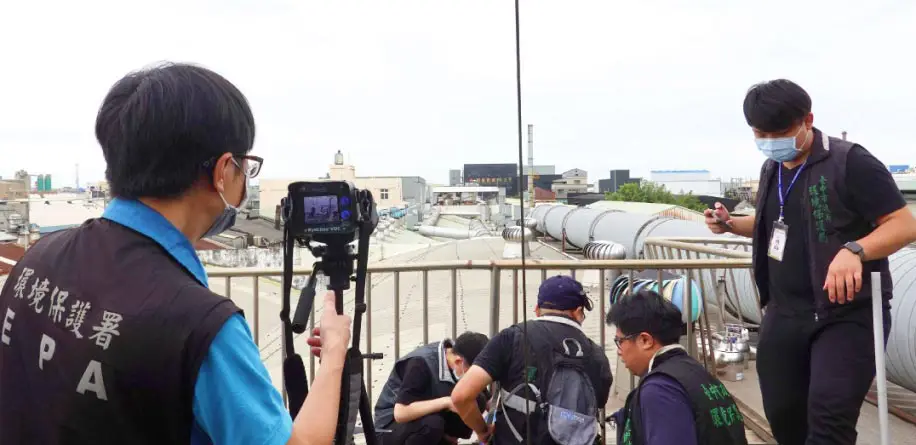 Joint Environmental Crime Investigation
Joint Environmental Crime Investigation
Pollution sources in air and river basins are diverse and complex. Illegally disposed waste is difficult to trace back to its source, and there is limited inspection manpower. To more effectively prevent environmental pollution and maintain regional environmental quality, the focus is on adopting smart cross-referencing technological law enforcement methods. By using technological instruments and techniques, potential risks and pollution source information in various areas can be identified, thereby enhancing pollution control outcomes and the effectiveness of enforcement.
Technological Law EnforcementThe ministry has developed a smart inspection model utilizing IoT data and scientific instruments. Through big data analysis and cross-referencing algorithms, high-risk businesses are identified, anomalies detected, and high-potential hotspots targeted. These are then addressed with technological tools for inspection and law enforcement to effectively curb pollutant emissions and illegal waste disposal.


Collaboration with county and city environmental protection bureaus, prosecutors, police, and investigative agencies is continuously strengthened. Additionally, resources are integrated with environmental protection volunteer teams to reinforce regional management and solidify interregional defense systems. Businesses are urged to comply with environmental protection regulations and properly operate prevention and control measures to effectively deter any illegal environmental pollution activities. This improves pollution prevention and early warning effectiveness, safeguarding environmental quality.
In 2023, 19 cases of illegal waste disposal were referred for judicial investigation, resulting in the seizure of two excavators, five tractor-trailers, and three large trucks.
In central Taiwan, key water quality monitoring stations will see gradual improvements, with a target water quality enhancement rate of 20%. The number of alerts in air quality sensor hotspots have been reduced by 20%.
Through intelligent cross-referencing inspections and the promotion of business self-management, businesses improve pollution control facilities, effectively preventing pollution incidents
ConclusionThe effective integration of IoT technologies and intelligent devices significantly enhances the efficiency of pollution inspections and strengthens business self-management capabilities. By building a regional management platform in collaboration with businesses in the region and local environmental protection agencies, regional environmental governance and management principles are implemented, lowering environmental quality risks and collectively safeguarding environmental integrity.

- Data Source: Central Center of Environmental Management
- Publish Date: 2024-12-10
- Update Date: 2025-11-26

 Related Topics
Related Topics





